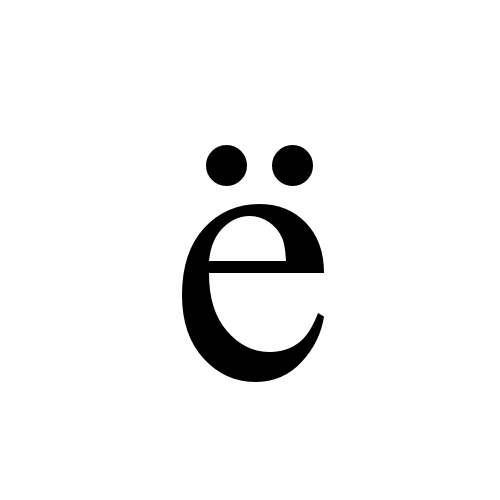The “tréma” and what it does
Technically, the tréma –or diaeresis- is a diacritic sign made or two dots on top of a vowel. It used to be written like two accents (“), but is now written as two dots (¨).
If you know German, the tréma looks like the German umlaut and is known only as “tréma”, not “accent tréma”. The tréma can be found most often above E and I, it can appear over U and Y, but mainly in proper nouns for example: Louÿs. It is less common over O or A which would only occur in words borrowed from other languages. The tréma changes the pronunciation of French words. If you know your basic French phonetics/reading rules, you know that some letter combinations form a new sound, eg. “ai” = [ɛ], “oi” = [wa], etc. When the tréma is used, it means that you must distinctly pronounce the letter under it as well as the letter before and after it separately and you will also need to sound the last letter of the word if it follows the tréma. A tréma can also indicate that a vowel is silent as it applies to ancient spellings. For example in this famously mispronounced name of the French composer Saint-Saëns. The tréma over the E (ë)means that the letter is silent, so this name is pronounced [sɛ̃sɑ̃s] and yes, this is really how you pronounce it! The first syllable is the nasal [ɛ̃] sound as in the IN in the word matin (morning) and the second syllable is as the nasal sound [ɑ̃] as in the AN in the word maman (mother) and because it follows the tréma, the final S is pronounced!
Example of how it works:
The word “mais” (which means but) is pronounced [mɛ].
The word “maïs” (which means corn) is pronounced [ma’is] since you sound the A, the Ï and the S separately, and the stress falls on the second syllable.
For French Lyric Diction coaching send an email

